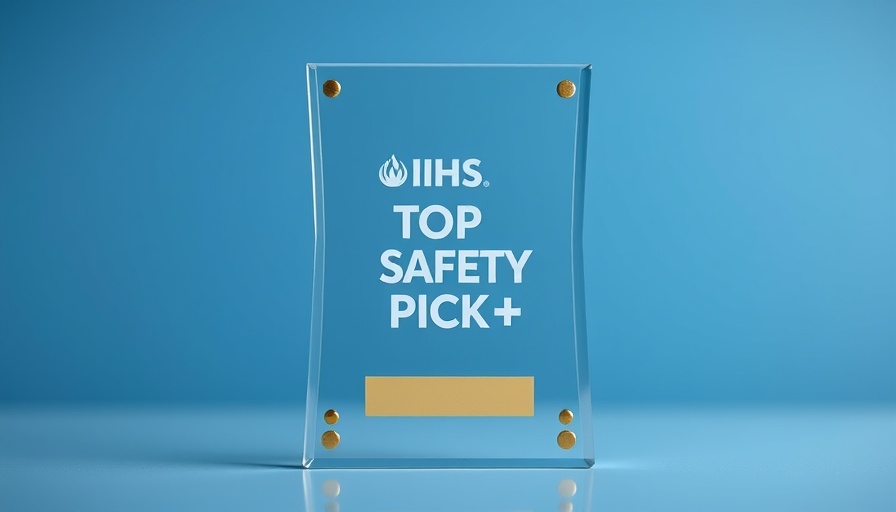
A New Era for Vehicle Safety: Understanding IIHS's Initiative
The Insurance Institute for Highway Safety (IIHS) is taking a significant step forward in vehicle safety by adding new requirements to its Top Safety Pick+ award criteria. As of September 9, 2025, the IIHS will include features that focus on detecting risky driver behaviors. This change aims to further ensure driver safety and could make a substantial impact on reducing road fatalities linked to impaired driving.
Why Driver Behavior Matters
When it comes to traffic safety, the behavior of drivers plays a crucial role. In fact, impaired driving has been a key factor in the tragic deaths of nearly one-third of all road users in the U.S. over recent years. This new initiative builds upon the successful history of advocacy and technology improvements led by organizations like Mothers Against Drunk Driving (MADD).
David Harkey, the IIHS president, has outlined a clear vision aimed at reducing road deaths by 30% by 2030—a goal that reflects both urgency and commitment to public safety. Incorporating technology that can help detect driver impairment is a pivotal element in achieving this goal.
Technology That Saves Lives
The proposed technologies to be included in the IIHS criteria reflect advancements that many experts believe could save thousands of lives. For instance, a National IIHS analysis indicated that equipping vehicles with impairment detection systems that identify drivers above legal alcohol limits could potentially save over 10,000 lives each year. Such systems could analyze breath, skin responses, or even a driver’s eye movement to gauge impairment, allowing for early detection and intervention.
The Path Forward: Expected Changes
Among the several new features, the first type of technology expected to make its way into the Top Safety Pick+ criteria includes Intelligent Speed Assistance (ISA), which warns drivers when they exceed speed limits. Testing and ratings for ISA systems will start rolling out in 2027, marking a fundamental shift toward proactive safety measures. Additionally, driver attention systems are slowly being adopted to detect signs of distraction or drowsiness.
Preparing for the Shift: What Vehicle Owners Should Know
For vehicle owners, understanding these changes can empower them during the buying process. As new technologies emerge and become standard in vehicles seeking top safety ratings, it’s the drivers’ responsibility to stay informed about how these advancements may impact their vehicles’ safety ratings and insurance premiums.
Moreover, as technology makes its presence known, insurance companies may begin to consider these features heavily when assessing risk and deciding claims. It’s essential for drivers to educate themselves on how to leverage these advancements, especially when dealing with property damage claims after an accident.
Real-World Impact and Consumer Awareness
The implications of these advancements go beyond just safety. Consumer education is invaluable. Drivers should remain vigilant about how their vehicle’s safety technology plays a role in both reducing risks and influencing insurance claims outcomes.
While enhancements like enhanced belt reminders have become prevalent in recent model years thanks to IIHS ratings, these new standards could lead to even more rigorous safety measures. Vehicle owners should familiarize themselves with how to file a claim, what constitutes a reasonable repair estimate, and how their vehicle’s safety features might affect property damage claims following an accident.
Call to Action: Stay Informed
As these changes take shape, staying informed is essential for all drivers. Understanding the transition to these new safety standards can help you make informed decisions about your vehicle and insurance. Be proactive—check with your insurance provider about how these innovations could affect your coverage and claims in the years to come.
 Add Row
Add Row  Add
Add 




Write A Comment